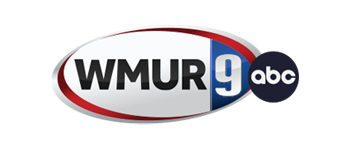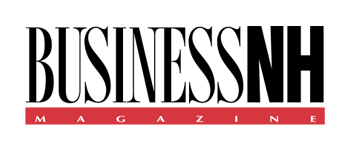Revealing the Secrets: Discovering the Toilet Drain Pipe Location
Home >
Understanding Toilet Drain Pipes
Toilet drain pipes are a fundamental aspect of residential plumbing systems. They play a critical role in the efficient operation of toilets and are integral to home sanitation.
Importance of Toilet Drain Pipes
The toilet drain pipe is a pivotal component of a home’s plumbing system, tasked with transporting waste and wastewater from the toilet to the sewer or septic system. As highlighted by Home Climates, a properly functioning drain pipe ensures that toilets operate smoothly and hygienically. Any disruptions in the pipe’s functionality can result in toilet backups, clogs, and potential harm to the broader plumbing infrastructure.
The correct installation and maintenance of a toilet drain pipe are essential for preventing inconvenient and potentially costly plumbing emergencies. Regular checks and timely interventions can safeguard against significant damage, reinforcing the importance of understanding the toilet drain pipe location within your home’s plumbing layout.
Signs of Clogged Toilet Drain Pipes
Several indicators can suggest a clogged toilet drain pipe. Homeowners should be vigilant for the following signs, which necessitate immediate attention to prevent further damage:
- Slow Drainage: Water drains more sluggishly than usual after flushing.
- Gurgling Sounds: Noises emanate from the toilet when flushing, indicating trapped air in the drain pipe.
- Water Backups or Overflows: Water levels rise above normal or overflow from the bowl, suggesting an obstruction in the drain path.
- Foul Odors: Persistent unpleasant smells arise from the toilet, hinting at accumulated waste in the drain pipe.
- Recurring Toilet Clogs: The toilet clogs repeatedly, despite regular plunging or cleaning.
A table summarizing common signs and their implications can help homeowners identify and address issues swiftly:
| Sign | Implication |
|---|---|
| Slow drainage | Possible obstruction in the pipe |
| Gurgling sounds | Air pockets due to clogging |
| Water backups/overflows | Severe blockage in the system |
| Foul odors | Waste accumulation in the pipe |
| Recurring clogs | Chronic drain pipe issues |
For homeowners experiencing these symptoms, it’s crucial to take prompt action. While some clogs can be resolved with a plunger or drain cleaner, persistent or severe blockages may require professional assistance. Seeking help from a plumber, familiar with toilet drain pipe clogged scenarios, can ensure that proper techniques, like plumbing snakes, are used to clear the obstruction and restore functionality.
In summary, understanding the significance of the toilet drain pipe and recognizing signs of potential clogs are vital for maintaining a functional and hygienic bathroom. Regular maintenance, including knowledge of the toilet drain pipe size and toilet drain pipe slope, along with preventative measures, can contribute to a well-operating plumbing system. For in-depth guidance on how to handle clogs, homeowners can refer to resources on how to unclog a toilet drain pipe.
Maintenance and Prevention
Maintaining and preventing issues with toilet drain pipes is essential for the seamless functioning of a home’s plumbing system. By adopting a proactive approach, homeowners can avoid the inconvenience and potential costs of repairs.
Preventing Clogs in Toilet Drain Pipes
Clogs can be a major nuisance and can lead to more serious plumbing issues if not addressed. To prevent clogs, homeowners should be cautious about what they flush down the toilet. Only dissolvable waste products should be flushed. In addition, installing a hair catcher over shower drains can help prevent hair and other debris from accumulating in the drain pipes, which is a common cause of clogs (Home Climates). For more information on toilet drain pipe maintenance, visit toilet drain pipe installation and toilet drain pipe replacement.
| Prevention Tips | Description |
|---|---|
| Flush Only Dissolvable Waste | Ensure only human waste and toilet paper are flushed. |
| Use a Hair Catcher | Place a hair catcher over shower drains to trap hair. |
| Avoid Chemical Drain Cleaners | These can corrode pipes over time. |
Early Detection of Leaking Pipes
Detecting leaks early can prevent significant damage to a home’s structure and save on water costs. Homeowners should look out for puddles under pipes or listen for the sound of dripping water. These are telltale signs that a pipe may be leaking and requires immediate attention. Regular inspections of visible pipes and connections can help spot leaks early (Home Climates). For guidance on addressing leaks, see toilet drain pipe repair.
| Signs of Leaks | Action Required |
|---|---|
| Puddles Below Pipes | Inspect for source and repair as needed. |
| Dripping Sounds | Check for internal leaks and address promptly. |
Addressing Low Water Pressure
Low water pressure can be a sign of underlying plumbing issues such as pipe blockages or leaks. To combat this, homeowners might consider installing a filtration system to prevent minerals from building up inside the pipes. It’s also advised to inspect pipes regularly for leaks and repair them swiftly to avoid a drop in water pressure (Home Climates). Details on proper pipe slopes to assist in water pressure can be found at toilet drain pipe slope.
| Solutions for Low Water Pressure | Description |
|---|---|
| Filtration System Installation | Helps keep minerals out of pipes. |
| Regular Leak Checks | Ensures pipes are intact and functioning properly. |
Maintaining toilet drain pipes is not just about reacting to problems but also about preventing them. By taking these steps, homeowners can ensure their plumbing system remains in good working order. For additional maintenance tips, explore the sections on how to unclog a toilet drain pipe and toilet drain pipe clogged. In colder climates, it’s also important to prevent pipes from freezing; see toilet drain pipe frozen for protective measures.
Troubleshooting Toilet Issues
When it comes to residential plumbing, toilets are a common area where issues arise. Understanding how to tackle these problems can save homeowners time and money. This section covers strategies for dealing with a running toilet, unclogging toilet drain pipes, and the importance of cleanouts.
Dealing with a Running Toilet
A running toilet is not just a nuisance; it can lead to significant water wastage and increased utility bills. One of the primary causes of a running toilet is a compromised flapper that fails to seal the gap between the tank and the bowl, resulting in continuous water flow. Architectural Digest suggests that replacing the flapper is often a simple and cost-effective solution to this problem.
To address a running toilet:
- Shut off the water supply to the toilet.
- Remove the tank lid and inspect the flapper for wear or damage.
- Replace the flapper if necessary.
- Turn the water supply back on and test to ensure the issue is resolved.
For more detailed guidance on this and other toilet repair tasks, homeowners can explore toilet drain pipe repair.
Unclogging Toilet Drain Pipes
A clogged toilet drain pipe can cause backups and overflows. To clear a clog, a plumber may use a drain snake to bore through the blockage. More severe clogs might require powered drain snakes or high-pressure drain scrubbing. A camera inspection post-clearing ensures that no buildup remains that could cause future clogs. Architectural Digest highlights these methods as effective solutions for clearing stubborn clogs.
For DIY enthusiasts or those looking to understand the process better, how to unclog a toilet drain pipe provides a step-by-step approach.
Importance of Cleanouts
Cleanouts are crucial for maintaining and troubleshooting toilet drain pipes. They provide access points for plumbers to clear blockages and conduct inspections. The Spruce notes that every toilet has a built-in trap, which is a curved drain that prevents sewer gases from entering the home. Cleanouts allow for easy access to these traps and the rest of the drain system for cleaning and repair.
Some key points regarding cleanouts include:
- They facilitate the removal of clogs without having to remove the toilet.
- They allow for direct access to the drain pipes for inspection and testing.
- They are essential for performing hydrostatic testing from a sewer cleanout.
Understanding the toilet drain pipe location is essential when accessing cleanouts for maintenance or during emergencies. For more information on the placement and care of these components, homeowners can refer to resources on toilet drain pipe installation and toilet drain pipe replacement.
By following these troubleshooting tips, homeowners can better manage common toilet issues, prevent future problems, and maintain an efficient and hygienic bathroom environment.
Plumbing Regulations and Guidelines
Comprehending the regulations and guidelines for plumbing is essential for homeowners to maintain a functional and legally compliant bathroom setup. This includes understanding clearance requirements for toilets, the role of plumbing vents, and the specifics of plumbing rough-in.
Clearance Requirements for Toilets
For the installation and renovation of bathrooms, plumbing codes provide specific parameters concerning the space around toilets. Toilets should have at least 38 centimeters (15 inches) of clearance from each side wall and thirty inches of clearance from other sanitary structures. These clearance requirements ensure sufficient space for accessibility and comfort.
| Clearance Direction | Minimum Distance |
|---|---|
| Side Wall | 38 cm (15 inches) |
| Other Sanitary Structures | 76 cm (30 inches) |
If a bathroom does not meet these standards, adjustments may need to be made, such as repositioning the toilet or choosing a different toilet design. For more information on toilet dimensions, see toilet drain pipe size. (Mr. Rooter)
Plumbing Vents and Drain Waste Ventilation
Plumbing vents, also known as drain waste ventilation systems (DWVS), are crucial for the safe and effective operation of a home’s plumbing system. They facilitate the escape of harmful gases and unpleasant odors from the sewer or septic system, ensuring they do not infiltrate the living spaces of the home. Plumbing codes dictate the proper layout of these vents and the required extension beyond the roofline to provide adequate ventilation.
An indication that your DWVS may not be functioning correctly is the presence of sewer odors, which necessitates an inspection by a professional plumber. For further guidance on plumbing ventilation, consider reading about plumbing vents and drain waste ventilation. (Mr. Rooter)
Understanding Plumbing Rough-In
The rough-in phase is a critical part of bathroom plumbing as it prepares the groundwork for installing essential fixtures like sinks, toilets, and showers. Adhering to the manufacturer’s specifications for rough-in dimensions is recommended to guarantee that everything fits correctly and functions as intended.
If you’re planning to install a new toilet, understanding the rough-in measurements is necessary to ensure that the plumbing will align properly with the toilet drain pipe location. For homeowners looking to tackle plumbing projects themselves, becoming familiar with the rough-in process is a step towards successful toilet drain pipe installation or toilet drain pipe replacement. (The Spruce)
By adhering to these plumbing regulations and guidelines, homeowners can ensure their bathroom is not only comfortable and accessible but also complies with local building codes. Proper understanding and application of these rules can help prevent issues such as toilet drain pipe clogs, leaks, and other common plumbing problems.
Drain Pipe Testing Methods
Testing the integrity of drain pipes is a critical part of maintenance that can help homeowners prevent plumbing disasters. For those curious about the condition of their toilet drain pipes, several methods are available to assess their status effectively.
Hydrostatic Testing for Drain Pipes
Hydrostatic testing is a popular method used to check for leaks in plumbing systems. This process involves filling the drain pipes with water and observing if the water level drops over time, which would indicate a leak. According to Prof Engineering, this test is typically performed through a sewer cleanout, but when that’s not available, removing the toilet to access the drain directly is a viable alternative. The water is allowed to stand in the drain for approximately 30 minutes to detect any leaks.
| Step | Description |
|---|---|
| 1 | Remove the toilet to access the drain (if cleanout is unavailable) |
| 2 | Fill the drain pipes with water |
| 3 | Monitor the water level for at least 30 minutes |
| 4 | Check for water level drops indicating leaks |
Isolation Testing for Leak Detection
When a system-wide hydrostatic test fails, isolation testing becomes necessary to pinpoint the exact location of the leak. This method involves testing sections of the pipe system one by one until the compromised section is found. Prof Engineering describes this as blocking off segments of the plumbing and then performing hydrostatic tests on each isolated segment.
| Step | Description |
|---|---|
| 1 | Block off sections of the pipe system |
| 2 | Perform hydrostatic tests on individual sections |
| 3 | Identify the section where the water level drops |
| 4 | Proceed with repairs on the identified section |
Camera Testing for Drain Pipe Inspection
Camera testing is a non-invasive technique that provides a visual inspection of the interior of the drain pipes. A camera attached to a stiff cable is sent down the drain to record video footage, which can reveal blockages, irregularities, and the overall condition of the pipes. Prof Engineering notes that camera inspections are particularly useful in diagnosing flow problems and detecting severe deterioration that could lead to leaks and failures.
| Feature | Benefit |
|---|---|
| Video Monitoring | Allows real-time observation of the pipe’s interior |
| Identification of Blockages | Pinpoints clogs and obstructions within the pipe |
| Detection of Irregularities | Reveals “bellies” or areas of concern in the pipe structure |
When selecting a testing method for toilet drain pipe location and condition, homeowners should consider factors such as availability, budget, site conditions, and plans for future renovations. It is advisable to always perform these tests under the guidance of a professional engineer or licensed plumber. Coordinating testing with other inspections can minimize interference and ensure a comprehensive approach to home maintenance. For more information on toilet drain maintenance, explore topics such as toilet drain pipe size, how to unclog a toilet drain pipe, and toilet drain pipe repair.
CONTACT US TODAY



As Seen & Heard On







Reach Out to Our Team for More Details
Feel free to call Sanford Temperature Control or fill out the online form for more information. You may also get in touch with our team to schedule an appointment. We look forward to hearing from you.

